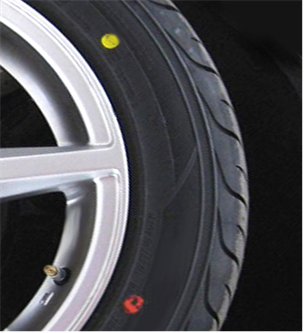Just curious, how much weight did you end up taking off?I bought my own static balancer and redid them myself. I found the shop didn't take off the original wheel weights, he just added to offset the weight. Once I took every weight off the wheel it was in balance.
You are using an out of date browser. It may not display this or other websites correctly.
You should upgrade or use an alternative browser.
You should upgrade or use an alternative browser.
Wheel Balancing
- Thread starter Hardwrkr13
- Start date
I don’t recall. Two original ones and 2-3 ones he put on but without the actual weight of each I know that’s not overly helpful.Just curious, how much weight did you end up taking off?
TK4
Well-known member
Back in the day, when I was doing a lot of tire swaps, just for fun I tried balancing the wheel only before doing the tire install.
Surprisingly, most wheels were very, very close.
With quality control on new tires now I would be shocked if you had to put more than 15-20 grams on a wheel/tire assembly.
BTW, yellow dot goes to the valve stem, red dot goes opposite and no dot says it doesn't matter.
Surprisingly, most wheels were very, very close.
With quality control on new tires now I would be shocked if you had to put more than 15-20 grams on a wheel/tire assembly.
BTW, yellow dot goes to the valve stem, red dot goes opposite and no dot says it doesn't matter.
TK4
Well-known member
Electronic/Dynamic balancers are hideously expensive and seem to have gone out of fashion for motorcycle wheels.Bikes with TPS usually require a bit more weight for the offset of the sending unit.
Some good tire shops use a dynamic balancer for good results.
Far more useful for automotive applications where 'side-to-side' balancing can make a huge difference.
Back in the day, when I was doing a lot of tire swaps, just for fun I tried balancing the wheel only before doing the tire install.
Surprisingly, most wheels were very, very close.
With quality control on new tires now I would be shocked if you had to put more than 15-20 grams on a wheel/tire assembly.
BTW, yellow dot goes to the valve stem, red dot goes opposite and no dot says it doesn't matter.
Last set I did required about 15 grams on the rear (if I remember right), but no weights on the front.
I might recommend caution when assuming that bolded piece. This is straight from Pirelli:
"Some PIRELLI tyres have a red dot on the side wall. This indicates the lightest point, and should be positioned next to the valve."
TK4
Well-known member
No arguments from me - if Pirelli says so then they're correct (at least for their tires).Last set I did required about 15 grams on the rear (if I remember right), but no weights on the front.
I might recommend caution when assuming that bolded piece. This is straight from Pirelli:
"Some PIRELLI tyres have a red dot on the side wall. This indicates the lightest point, and should be positioned next to the valve."
Static balancer I believeWhat kind of balancer was used by the shop?
Thanks for this. Your symptoms seem identical to mine and I now have over a 1000km on the tires hoping for an improvement that's not happening. I'll follow up to get it resolved.I bought my own static balancer and redid them myself. I found the shop didn't take off the original wheel weights, he just added to offset the weight. Once I took every weight off the wheel it was in balance.
Static balancer.
Back in the day, when I was doing a lot of tire swaps, just for fun I tried balancing the wheel only before doing the tire install.
Surprisingly, most wheels were very, very close.
With quality control on new tires now I would be shocked if you had to put more than 15-20 grams on a wheel/tire assembly.
BTW, yellow dot goes to the valve stem, red dot goes opposite and no dot says it doesn't matter.
 On car tires yes. Not on metzeler motorcycle tires.
On car tires yes. Not on metzeler motorcycle tires.TK4
Well-known member
Metzler and Pirelli are the same company, so it makes sense that the same application rule applies.View attachment 62903On car tires yes. Not on metzeler motorcycle tires.
Relax
Well-known member
I've never heard that you line up any dots across from the valve stem, always next to it, which makes sense since there's less room for error. That said, I only just learned there's a difference between yellow and red dots, at least on car tires. I thought it was just whatever colour they chose, and pretty sure I've also seen white, but at least on car tires, they have different meaning (yellow=lightest point to be aligned with heaviest point on rim which is the valve stem, red=highest point to be aligned with lowest point on rim or valve stem if not marked):

 www.tyrebaydirect.com
www.tyrebaydirect.com

Tyres Explained: Red Dot vs Yellow Dot!
Have you ever noticed red or yellow dots on the sidewall of a new tyre? Here we explain their function and how to use them properly. Read on.














